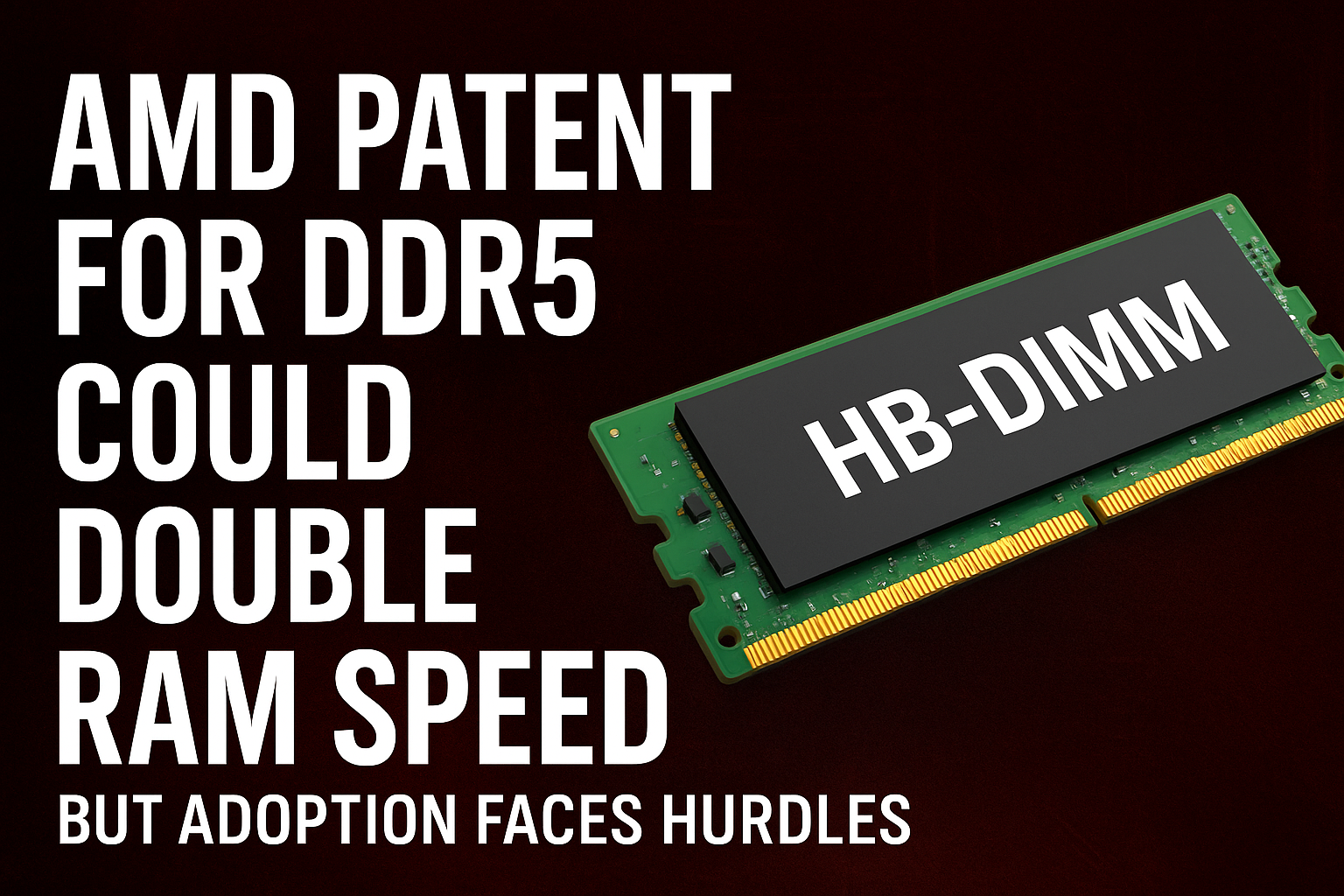Patent Highlights a High-Bandwidth DIMM Design
AMD has filed a patent for a new High-Bandwidth DIMM (HB-DIMM) design that could revolutionize system memory performance. The technology aims to double the bandwidth of DDR5 RAM without changing the DRAM chips themselves. Instead, the innovation lies in adding advanced buffer chips and smarter on-module logic.
The patent describes the use of pseudo-channels that split and combine data streams. This allows two memory streams to merge into a single, faster output. In theory, speeds could jump from 6.4 Gbps to 12.8 Gbps per pin.
For a deeper look at semiconductor patent developments, click here.
How It Works
The new design uses a register/clock driver (RCD) and additional routing logic. These components manage the flow of commands and data between the memory controller and DRAM chips. Unlike conventional DIMMs, this setup enhances throughput while relying on standard DDR5 dies.
This approach reduces the need for expensive new DRAM manufacturing processes. Instead, it shifts complexity to the memory module itself.
Learn more about how Intel’s MRDIMM technology is reshaping memory standards in this article.
Challenges Ahead
Despite the promising design, adoption will not be easy. For HB-DIMMs to succeed, CPUs, motherboards, and chipsets must support the new module format. Proprietary memory standards often fail unless approved by JEDEC and widely adopted by the ecosystem.
Latency, power consumption, and heat could also increase because of the additional buffer logic. These factors may limit mainstream use in consumer PCs.
To read about a recent patent infringement lawsuit in biotechnology, click here.
Server Market Could See It First
Analysts believe this design is more likely to debut in data centers and high-performance computing (HPC). These sectors prioritize bandwidth and can absorb the higher cost of advanced DIMMs.
Intel is already pushing its Multiplexed Rank DIMM (MRDIMM) in server platforms. AMD’s approach may serve as a competitive alternative or even influence the next generation of DDR6 standards.
For updates on global memory disputes and licensing deals, see this coverage on solar patent settlements.
Conclusion
AMD’s HB-DIMM patent showcases bold innovation in memory design. If successful, it could significantly boost RAM speeds. However, widespread adoption remains uncertain due to technical, economic, and industry-standard challenges.
For now, consumers should not expect to see HB-DIMMs in gaming rigs or desktops soon. Instead, the first real-world applications may appear in enterprise servers and HPC environments.

